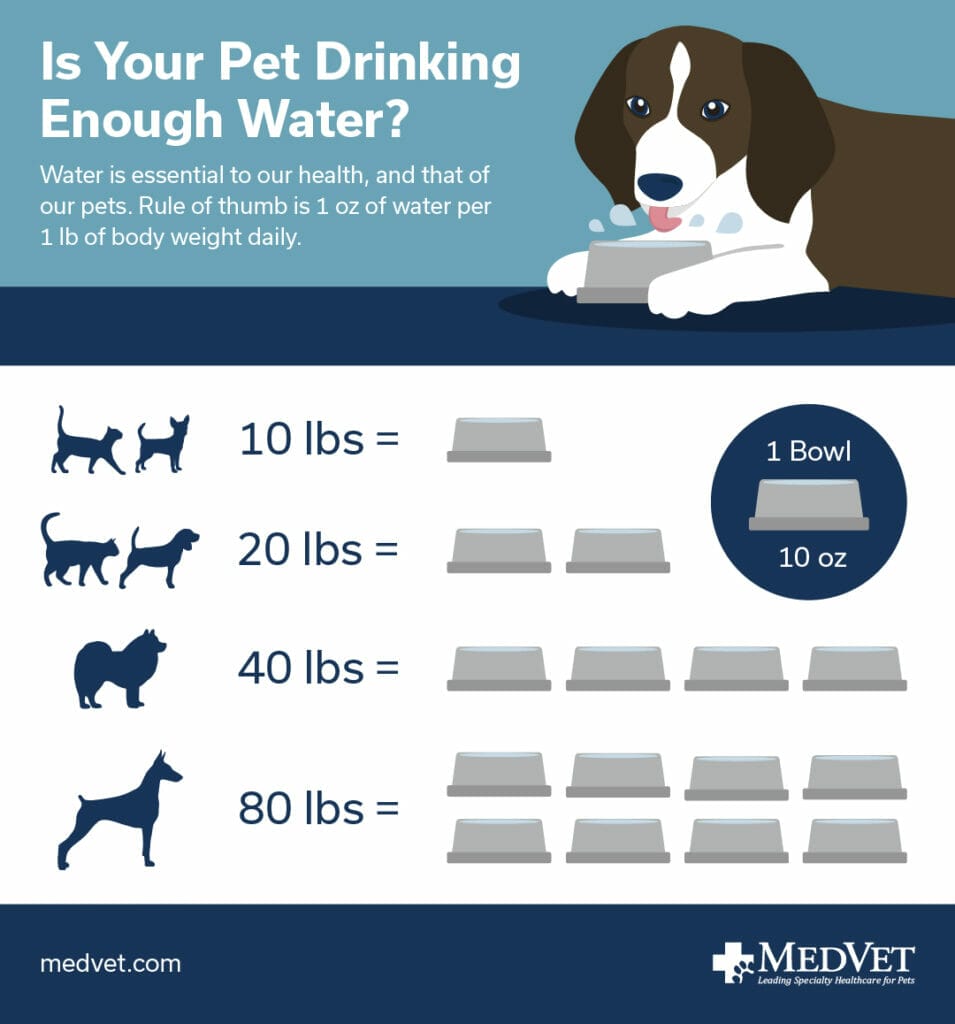The Clue is in the Poo: What Your Pet’s Poop Could be Telling You
Learn what your dog's poo reveals about their health and what signs to watch for to keep them healthy.
Poop isn’t the most pleasant topic, but when it comes to your pet’s health, it’s an important one! Pet poop provides a lot of clues that can tell you more about your pet’s overall health, so it’s important to know what’s normal and when to contact your family veterinarian or make a visit to an emergency animal hospital, like MedVet.
What Can You Tell by Looking at Your Pet’s Poop?
Pet poop can tell you about their diet, such as whether they’re getting enough fiber or if they’ve been snacking on something they shouldn’t. You can also tell if your pet is having digestive issues, like constipation or diarrhea. In addition, pet poop gives clues to potential health issues, such as intestinal parasites, infections, dehydration, or even cancer.
Abnormal pet poop can be caused by a variety of factors, many of which are related to infection, parasites, diet, stress and anxiety, changes in environment or routine, and certain medications.
Infections can be caused by viruses or bacteria that affect the digestive system and lead to difficulties with digestion. Similarly, common parasites such as roundworms and tapeworms can also affect your pet’s stool. Dietary changes may also lead to abnormalities in your pet’s stool – for instance, when switching from dry food to wet food or introducing a new type of food that your pet has not had before.
Stress and anxiety are also potential causes of abnormal poops as pets tend to experience similar emotions as humans do. Changes in environment or routine can also have an impact on their digestive system as well as certain medications.
What’s Normal for Pet Poop?
There isn’t a one-size-fits-all approach when it comes to pet poop as different animals have varied diets and lifestyles. These differences can affect the consistency, color, and smell of their poop. However, there are some general signs you can look for to help determine if your pet’s poop is normal or abnormal.
Healthy pet poop should be well-formed, semi-firm, and free from parasites or worms. It should not be overly wet, greasy, or contain blood or mucous. The consistency should be somewhere in between hard and soft and can vary depending on the animal’s diet and lifestyle. For example, if your pet is eating a lot of fresh fruits and vegetables, their poop may be softer and waterier.
The color of normal poop varies depending on the type of animal, but in dogs, it should range from light to dark brown while in cats, it should be more of a grayish-brown color. In addition, the size of the stool should be consistent with the size of your pet’s food intake. If they’re eating more than usual, expect larger stools and vice-versa.
There are several factors which affect how much your pet should poop, including how often they eat, how much they eat, their fiber intake, medications, stress, and their overall health. In general, adult dogs should poop one to three times a day while puppies can poop up to five times a day or more. Most cats poop once a day and kittens up to three times a day.
What’s Not Normal for Pet Poop?
When looking at your pet’s poop, check for the color, texture, consistency, and smell. As mentioned above, if your pet’s poop is any color other than brown or grayish brown, this could be a sign of a potential health issue.
If your dog or cat’s poop is green, your pet could be eating grass, to soothe an upset stomach. This could be a sign of a digestive issue. If your pet’s poop is orange or yellow, this could indicate issues with their liver, pancreas, or gallbladder. Black or maroon-colored poop may be a sign of bleeding in the stomach or small intestines. If your dog or cat’s poop has streaks of red, this can also be a sign of bleeding, usually in the lower gastrointestinal tract or colon. Small white spots in your dog or cat’s poop that look like rice could be worms. This is only a concern with your pet’s fresh stool, not anything that has been sitting outside for a while as worms can find their way into poop.
Additionally, if your pet’s poop is very soft or runny or has a notable change in smell, this could also indicate a health issue, such as an infection or an imbalance in their diet. It’s important to note that it’s normal for pets to have occasional diarrhea or constipation, but if it’s regularly occurring, that is abnormal.
How Can You Help Your Pet Maintain Normal Poop?
While there are some causes for abnormal pet poop that you cannot influence, you can help them maintain normal poop through their nutrition and environment. In addition, ensuring your pet is up to date on vaccines and preventative medicines can help protect them from certain parasites and infections, including distemper, kennel cough, and parvo in dogs in dogs.
It’s essential to ensure your furry friend is getting adequate nutrition with vitamins and minerals best for their breed. A poor diet lacking essential nutrients over time can lead to malnutrition or digestive issues. Water intake is also key—if your pet is not adequately drinking, they can become dehydrated which affects their poop (and urine too). If your pet is drinking too much, which is often a sign of an underlying health issue, they can have diarrhea. Balancing the right amount of water and nutrition needs for your pet is often breed-specific and your family veterinarian is a great resource for nutrition information.
In addition to diet, maintaining consistent surroundings and routines whenever possible helps your pet’s digestive system function normally. When traveling or staying in a pet care facility, know that your pet’s stool may change but should return to normal when they resume their usual routine and environment.

When Should You Contact Your Veterinarian?
If your pet’s poop is not normal or they are displaying any other signs such as vomiting, diarrhea, constipation, or loss of appetite, you should contact your family veterinarian. These changes can be signs of a potential health issue, such as infection, parasites, dietary imbalances, allergies, and other digestive issues.
You should also contact your family veterinarian if your pet’s poop has foreign material in it, such as plastic or cloth. They may want an X-ray of your pet as they can get foreign objects stuck in their digestive tract and need to have them surgically removed.
If your pet is having trouble passing stool, contact your family veterinarian right away as they could have a blockage or obstruction, which can be a life-threatening situation. If your family veterinarian is not available, take your pet to an emergency veterinarian such as MedVet.
How Do You Collect a Stool Sample?
Your veterinarian may recommend a stool sample for testing, such as a fecal flotation that checks for parasites or a fecal panel to check for abnormalities, signs of infection or a need for dietary change or supplement. Collecting a stool sample for your pet can be done in a few simple steps:
1. Collect a small, fresh sample of your pet’s poop in a clean container or zip top bag. Wear gloves to keep it sanitary for yourself and to avoid contaminating the sample.
2. Make sure the sample is labeled with your pet’s name and the date the sample was collected.
3. Keep the container in a cool, dark place (such as a refrigerator) until you can take it to the vet, ideally as soon as possible.
Keeping Your Pet Healthy
While examining your pet’s poop may not be a pleasant experience, it’s important to understand what’s normal and what’s not. This knowledge helps keep your pet healthy and you’ll know when to contact your veterinarian. If your veterinarian is not available, MedVet’s expert caregivers are always available, and we partner with your veterinarian to develop the best treatment plan for your pet.
Pet Care Resources
For ways to ensure your pet lives a happier, healthier life, visit our Pet Care Resources library.
View ResourcesPet Care Resources
For ways to ensure your pet lives a happier, healthier life, visit our Pet Care Resources library.
View Resources